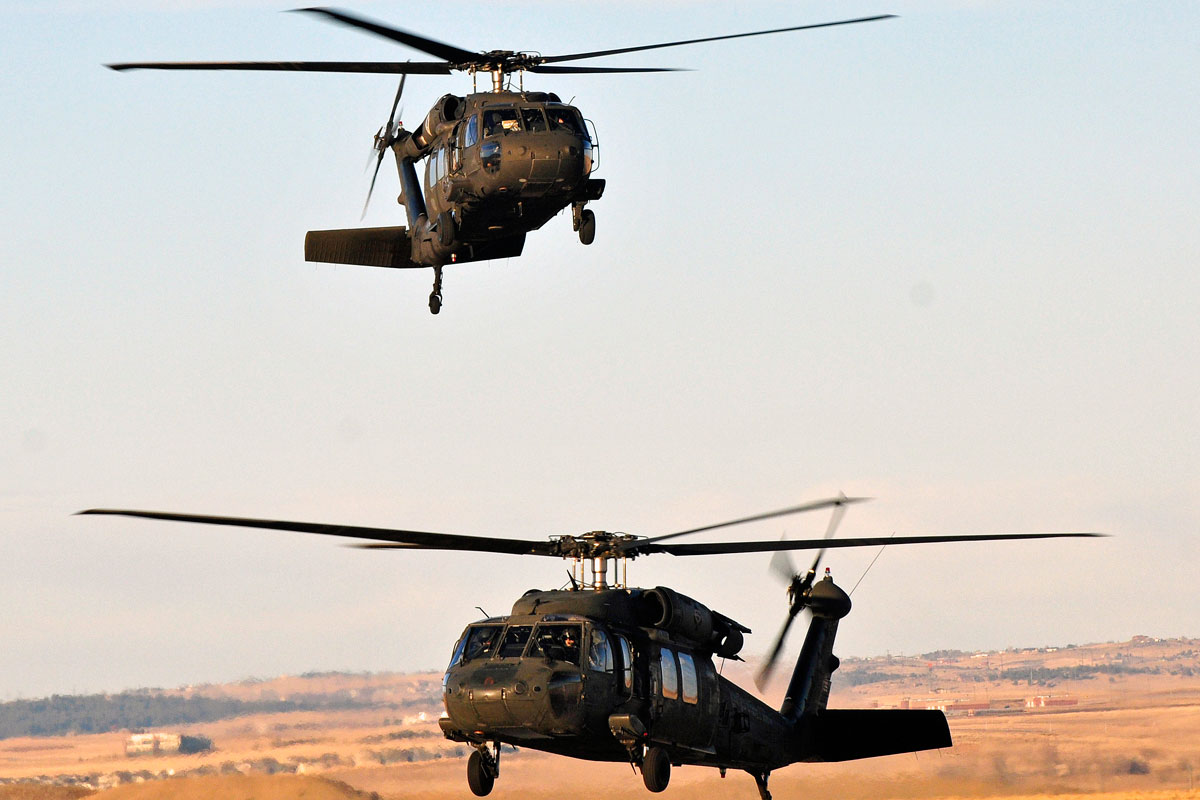Flying High: UH 60 Helicopter Security Protocols You Need To Know
Flying High: UH 60 Helicopter Security Protocols You Need To Know
Blog Article
Navigating Uh 60 Helicopter Regulations and Conformity Demands

Regulatory Structure Introduction
The regulative framework regulating UH-60 helicopter operations encompasses a complex collection of rules and standards established by air travel authorities. These policies are created to make sure the effective and safe operation of UH-60 helicopters in various environments. The Federal Air Travel Administration (FAA) plays a main function in establishing and enforcing these regulations, which cover a wide variety of operational aspects, consisting of airworthiness requirements, pilot qualifications, upkeep demands, and operational treatments.
Compliance with these regulations is important for helicopter drivers to preserve the highest degree of security and functional stability. Failure to stick to these policies can result in significant repercussions, consisting of mishaps, injuries, and regulatory assents. As a result, helicopter operators need to stay educated regarding the current governing developments and make certain that their operations remain in full conformity with all suitable guidelines and criteria.
Airworthiness Directives and Evaluations
Among the regulatory framework controling UH-60 helicopter operations, an important emphasis rests on compliance with Airworthiness Directives and conducting extensive assessments to promote safety and security criteria and functional integrity. Airworthiness Instructions (Advertisements) are released by aeronautics authorities to address unsafe conditions in aircraft, including the UH-60 helicopter, and required details activities to be taken by proprietors or drivers. Compliance with ADs is necessary, and failure to comply with these directives can result in major repercussions, including grounding of the aircraft.
Regular evaluations are vital to making sure the airworthiness of UH-60 helicopters. These assessments include a variety of checks, from regular day-to-day assessments carried out by pilots prior to and after trips to a lot more detailed arranged maintenance examinations executed by accredited mechanics. In addition, special inspections might be needed based on specific problems or occurrences. By sticking to a stringent evaluation regimen, drivers can find and deal with potential concerns quickly, thereby boosting the security and reliability of UH-60 helicopter procedures.
Pilot Certifications and Training

Pilot training check here for UH-60 helicopters is thorough and covers a large range of subjects, including aircraft systems, emergency treatments, navigating, and mission-specific training. In addition, pilots undertake simulator training to practice different emergency circumstances in a regulated atmosphere. This training assists pilots establish the required abilities to manage difficult circumstances effectively.


Moreover, continuous training and specialist development are vital for UH-60 pilots to remain existing with the current policies, modern technology, and ideal practices. By purchasing pilot credentials and training, drivers can enhance safety and security, maximize efficiency, and make certain conformity with regulative demands in the operation of UH-60 helicopters.
Operational Limitations and Requirements
Pilot qualifications and training act as the structure for recognizing the operational limitations and requirements related to UH-60 helicopter procedures (uh 60). These functional limitations are established to guarantee the security of the team, passengers, and the airplane itself. Operational limitations might include factors such as climate condition, weight restrictions, elevation constraints, and functional boundaries. It is essential for pilots to be fluent in these restrictions to make informed choices during flight procedures. Furthermore, conformity demands, such as sticking to certain trip paths, interaction procedures, and emergency situation procedures, are essential for keeping operational security and regulatory conformity. Pilots must remain current with all functional limitations and needs with normal training, rundowns, and assesses to alleviate risks and ensure effective and secure UH-60 helicopter operations. By focusing on adherence to these operational standards, pilots can enhance the total safety and security and click to investigate efficiency of their goals while supporting regulative criteria.
Emergency Procedures and Conformity Testing
Reliable emergency procedures and thorough conformity screening are vital elements of preserving operational safety and governing adherence in UH-60 helicopter operations. Routine compliance screening makes sure that the helicopter satisfies all regulative requirements established forth by air travel authorities.
Additionally, conformity testing may involve simulations of emergency circumstances to examine the crew's reaction and the helicopter's performance under stress and anxiety. By prioritizing emergency treatments and conformity screening, UH-60 drivers can mitigate risks and demonstrate their commitment to security and regulative conformity.
Verdict
Finally, adherence to regulatory framework, compliance with airworthiness directives, pilot certifications and training, operational restrictions, and emergency situation treatments are crucial for browsing the regulations and requirements of operating a UH-60 helicopter. uh 60. It is essential for drivers to prioritize safety and ensure full compliance with all applicable policies to maintain the airworthiness and operational integrity of the aircraft
Navigating the regulatory landscape bordering UH-60 helicopter operations demands a nuanced understanding of the intricate web of rules and conformity needs.Conformity with these guidelines is crucial for helicopter operators to keep the highest possible degrees of security and operational integrity.Amidst the governing structure regulating UH-60 helicopter operations, a crucial emphasis lies on conformity with Airworthiness Directives and performing complete examinations to maintain security standards and functional dependability.Effective emergency treatments and extensive compliance testing are critical parts of keeping functional security and regulatory adherence in UH-60 helicopter procedures. Normal compliance screening makes certain that the helicopter satisfies all regulatory requirements established forth by air travel authorities.
Report this page